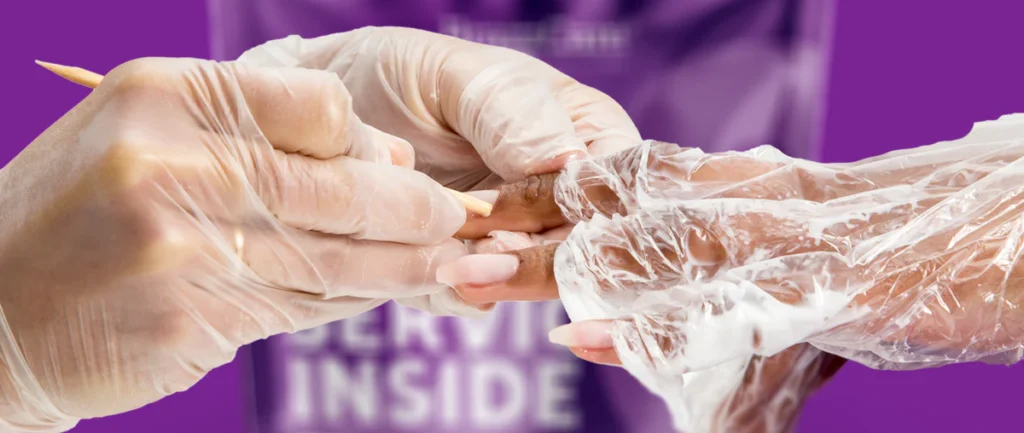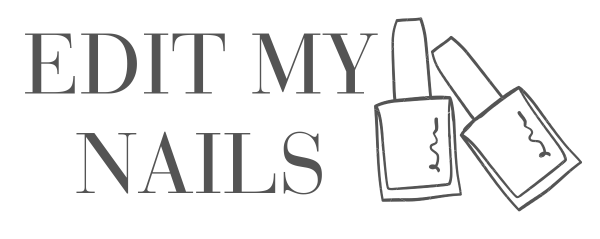What is Waterless Manicure & Why You Should Try It in 2025
Ever wonder if skipping that classic soak at the nail salon could actually be better for your nails? Waterless manicures are trending, and not just for the eco-conscious. They promise longer-lasting polish, cleaner tools, and a healthier nail bed. Let’s break down what this buzz-worthy nail treatment is and why it’s worth trying.
Disclosure: This article contains Amazon affiliate links. As an Amazon Associate, I earn from qualifying purchases. If you click on a link and make a purchase, I may earn a small commission at no extra cost to you.
What Is a Waterless Manicure?

A waterless manicure is exactly what it sounds like: a manicure that doesn’t involve soaking your fingers in water. Instead of using water to soften the cuticles, nail techs rely on cuticle softening lotions, nourishing oils, alcohol sprays, and even warm towels to prep your hands and nails. Every other part of your mani (shaping, filing, painting) is done as usual, but with less mess and more benefits.
What Actually Happens in a Waterless Manicure?
If you’re imagining a rushed, dry version of a regular manicure, stop right there. A waterless manicure is just as pampering (sometimes even more!) but swaps soaking for smarter, cleaner techniques. Here’s a breakdown of the full process, so you know exactly what to expect from start to polished finish.
1. Sanitize & Cleanse the Hands
Before anything touches your nails, your manicurist will spritz your hands with alcohol or a sanitizing solution. This step:
- Removes natural oils, lotions, or dirt
- Disinfects the surface for a hygienic service
- Prepares the nails for better product adhesion
No need for a pre-wash or soap-and-water rinse. The alcohol does the job quickly and cleanly!
2. Apply Cuticle Softener (Instead of Water Soak)
Instead of soaking your fingers in a bowl, the manicurist applies a cuticle softening cream, oil, or gel directly to your nail beds and cuticles. Popular ingredients include Glycerin, Vitamin E, Jojoba oil, or Aloe vera gel. This allows the cuticles to soften naturally without drying out the surrounding skin.
3. Optional: Warm Towel Wrap
To elevate the experience and help the softener absorb more deeply, your hands may be wrapped in a warm towel for 3–5 minutes.
This is:
- Soothing and spa-like
- Great for increasing circulation
- Helps melt oils into the skin for deep hydration
✨ It’s the “ahhh” moment of the waterless mani—don’t skip it if your salon offers this step!
4. Cuticle Care
Once the cuticles are softened, the tech will use a cuticle pusher (wooden or metal) to push them back. This step also involves trimming excess/overgrown skin with a sterilized cuticle nipper.
All of this is precision-based and cleaner than dealing with soggy, over-softened cuticles from water soaking.
5. Nail Shaping and Buffing
Now that your nail beds are clean and exposed:
- Nails are trimmed and filed into your chosen shape (square, round, almond, etc.)
- A buffing block or soft file is used to smooth the nail surface
- Edges are sealed to reduce peeling or snagging
🔥 Pro tip: Buffing the surface lightly improves polish grip and evens out any ridges.
6. Exfoliation (Optional but Deliciously Luxurious)
Some waterless manicures include a dry scrub or cream-based exfoliant—a grainy or enzyme-based formula is massaged into hands and wrists to:
- Slough off dead skin
- Brighten and smooth the skin
- Prep the hands for lotion
This is often skipped in basic services, but premium salons or at-home routines may include it.
7. Intense Hydration with Hand Cream or Cuticle Oil
After exfoliation, your tech will massage in a rich hand cream or balm, followed by a few drops of cuticle oil to nourish the nail area. Popular choices include:
- Shea butter creams
- Coconut or argan oil
- Vitamin-rich balms
- Fast-absorbing hand serums
Massage boosts circulation and locks in hydration—your hands will feel soft, plump, and healthy, even without the water.
8. Polish Application
Once your hands are prepped, it’s time to paint:
- Base coat goes on first to protect the nail plate
- Two coats of color, carefully applied
- Top coat seals everything in for shine and longevity
Because the nail hasn’t absorbed water (and therefore hasn’t expanded), your polish adheres more evenly and stays on longer. No lifting, no bubbles, no weird peeling after a day or two.
✨ Why You Should Skip the Soak (Seriously)
There’s a reason top nail salons and celebrity manicurists are ditching the bowl. Here’s why the waterless route might just be your best mani move yet:
- Longer-Lasting Polish: Water can cause the nail plate to expand. Once it shrinks back, your polish chips faster. No water = better grip = longer wear.
- Stronger, Healthier Nails: Constant soaking can weaken nails over time, especially if they’re already prone to peeling or breakage.
- Cleaner & Safer: No water bowl = fewer bacteria and fungi. Especially important if your salon doesn’t use single-use liners or tools.
- Eco-Friendly: No water waste! If you’re leaning into a more sustainable beauty routine, this one’s a no-brainer.
- Faster Appointments: No soak time means your session moves more quickly—perfect for busy schedules.
💥 Waterless vs. Traditional Manicure: The Quick Comparison
| Feature | Waterless Manicure 🧴 | Traditional Manicure 💧 |
|---|---|---|
| Nail Health | ✅ Less swelling, less damage | ❌ Soaking can weaken nails |
| Polish Longevity | ✅ Polish sticks better | ❌ Chips sooner |
| Hygiene | ✅ Cleaner, no shared water | ❌ Risk of contamination |
| Eco-Friendliness | ✅ Saves water | ❌ Water waste |
| Relaxation Factor | ✅ Heated towels feel luxe | ✅ Soaking can feel soothing |
| Time-Saving | ✅ Quicker process | ❌ Takes a bit longer |
Is It for Everyone?
Waterless manicures are a win for most people, but they’re especially great for:
- Anyone with weak or brittle nails
- Those prone to skin or nail infections
- People with sensitive or dry cuticles
- Eco-conscious beauty lovers
- Busy women who want great results, fast
That said, if you love the ritual of soaking or have thick, overgrown cuticles that really need softening, you might still prefer a traditional approach. Just make sure your salon uses hygienic practices.
What to Ask Your Salon?
Not all salons advertise “waterless manicures,” but many are open to it. Ask:
- “Can we skip the soak today and do a waterless manicure?”
- “Do you use a cuticle softener or a heated towel instead of water?”
- “Are your tools sanitized between each client?”
If they say yes to those, you’re good to go.
Final Thoughts: Why You Should Try It
Waterless manicures aren’t just a trend—they’re a smarter, cleaner, and more modern way to care for your nails. They give you everything you love about a manicure (relaxation, polish, pampering) without the downsides of soaking. Your polish lasts longer, your nails stay stronger, and your routine gets a little more sustainable.
So go ahead—skip the soak. Your nails will thank you.

